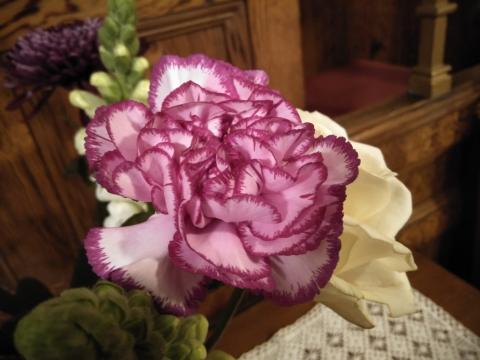Carnation

Among this week’s offering of flowers in our chapel was a carnation, the inclusion of which caused me much pleasure. Not only is this a most fragrant and attractive flower, it has large range of symbolisms and meanings across the world. The most significant must be that of the 1974 Carnation Revolution, which saw Portugal abandon its ultra-conservative Estado Novo regime, exchanging it for something more democratic and centrist. What for us is a pretty flower is for many Portuguese a symbol of freedom and change.
Paul, quoting the Lord Jesus in his defence before Agrippa in Acts 26:17-19, essentially describes Christian conversion as one of regime change:
‘I will deliver you from the Jewish people, as well as from the Gentiles, to whom I now send you, to open their eyes, in order to turn them from darkness to light, and from the power of Satan to God, that they may receive forgiveness of sins and an inheritance among those who are sanctified by faith in Me.’
We who have been liberated from sin’s dominion are now subjects of King Jesus. For having been transferred from the one kingdom to another, every flower, shrub and tree is a symbol and reminder of that wonderful realignment. As George Robinson puts it in his hymn:
Heaven above is softer blue,
Earth around is sweeter green;
Something lives in every hue
Christless eyes have never seen:
Birds with gladder songs o’erflow,
Flow’rs with deeper beauties shine,
Since I know, as now I know,
I am His, and He is mine.
- Log in to post comments


 Sunday Worship 10.45am & 6.00pm
Sunday Worship 10.45am & 6.00pm